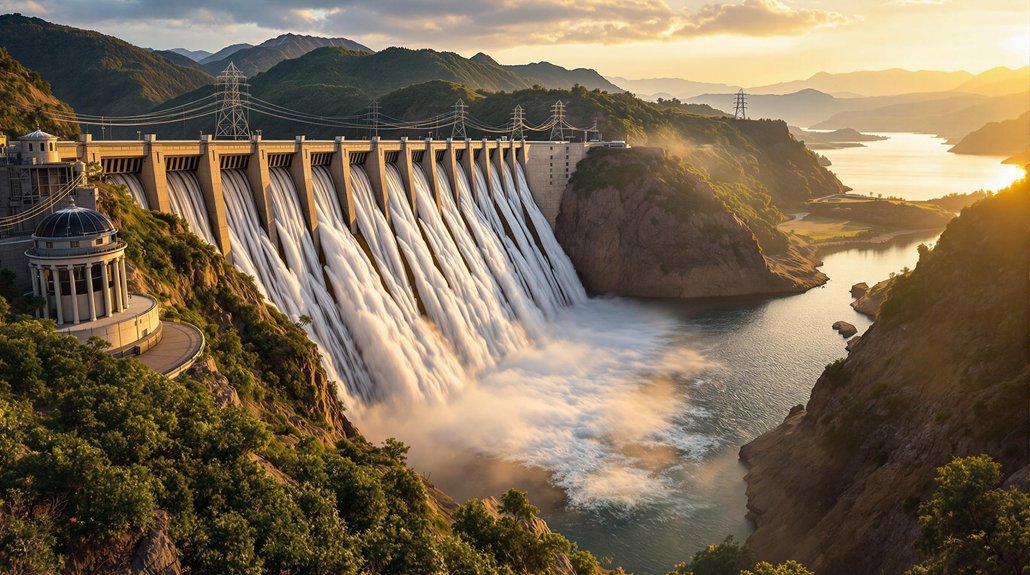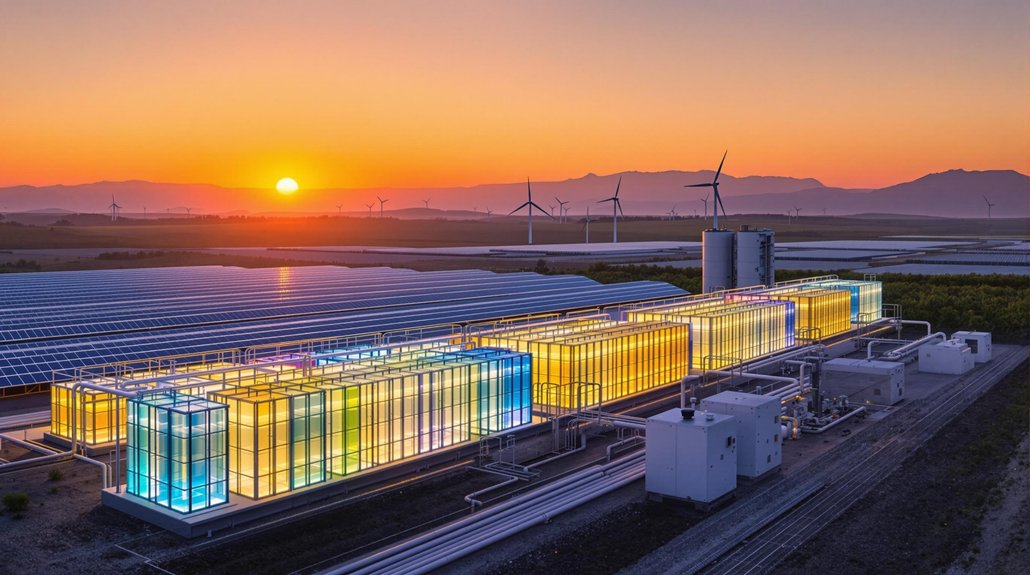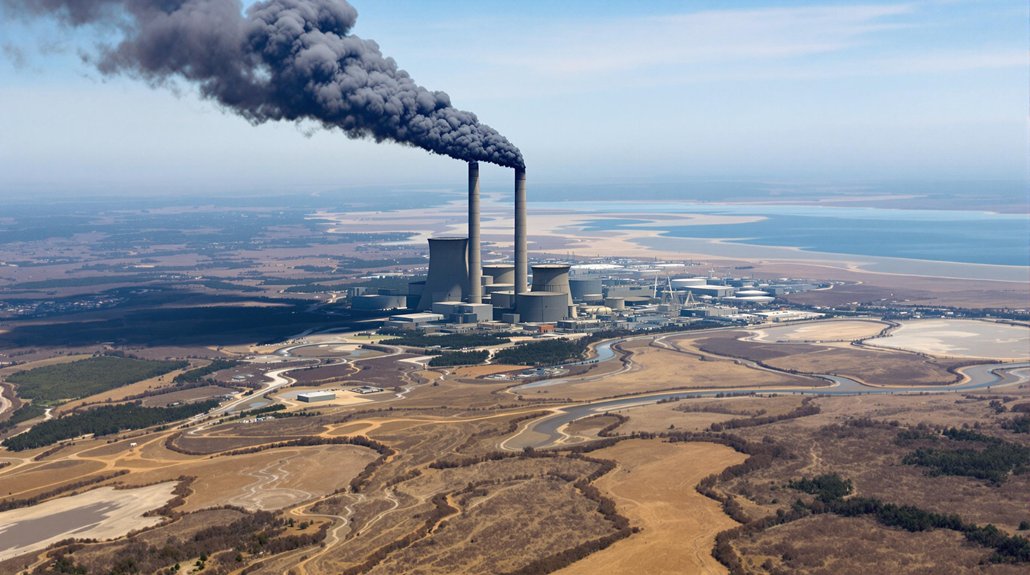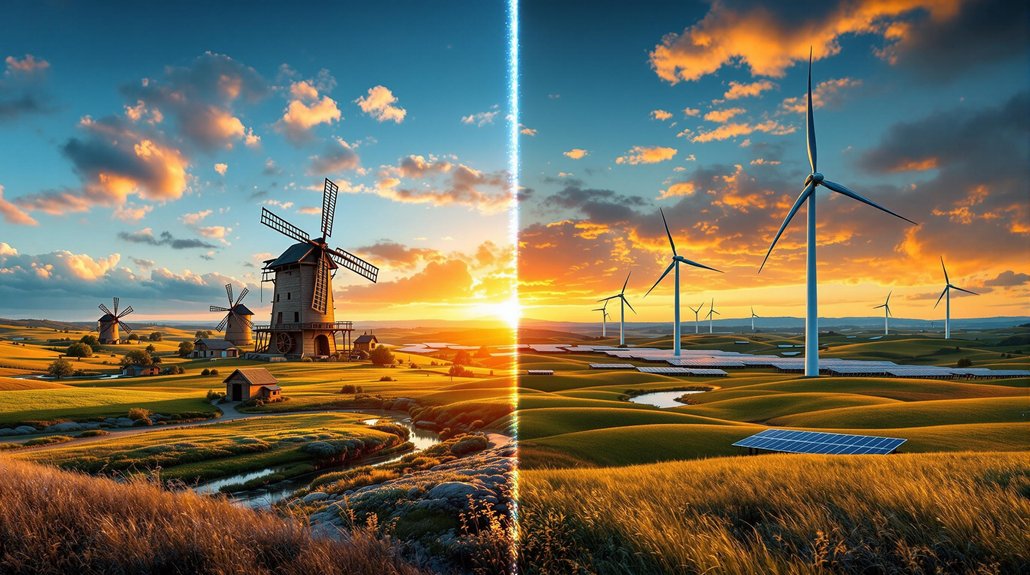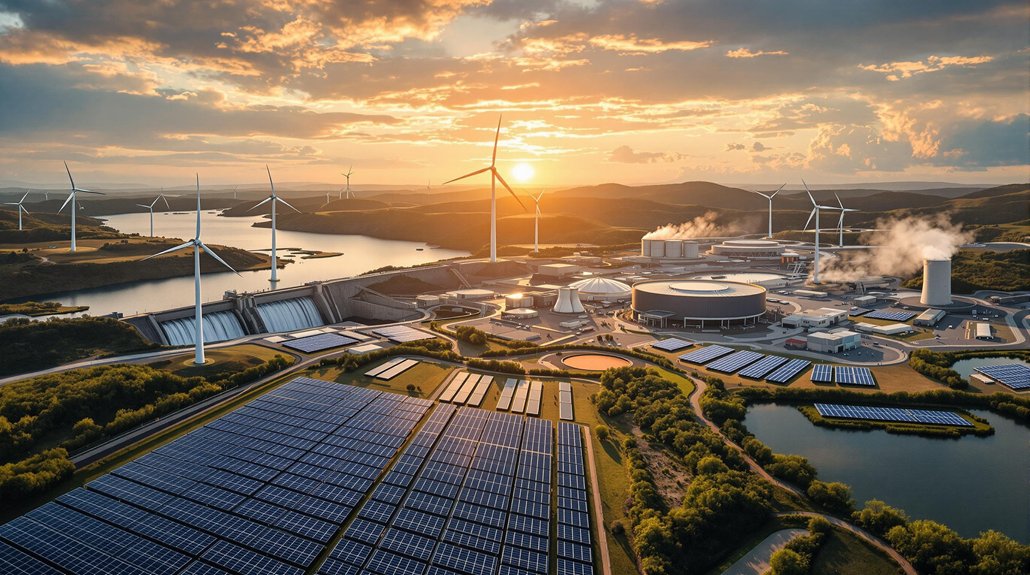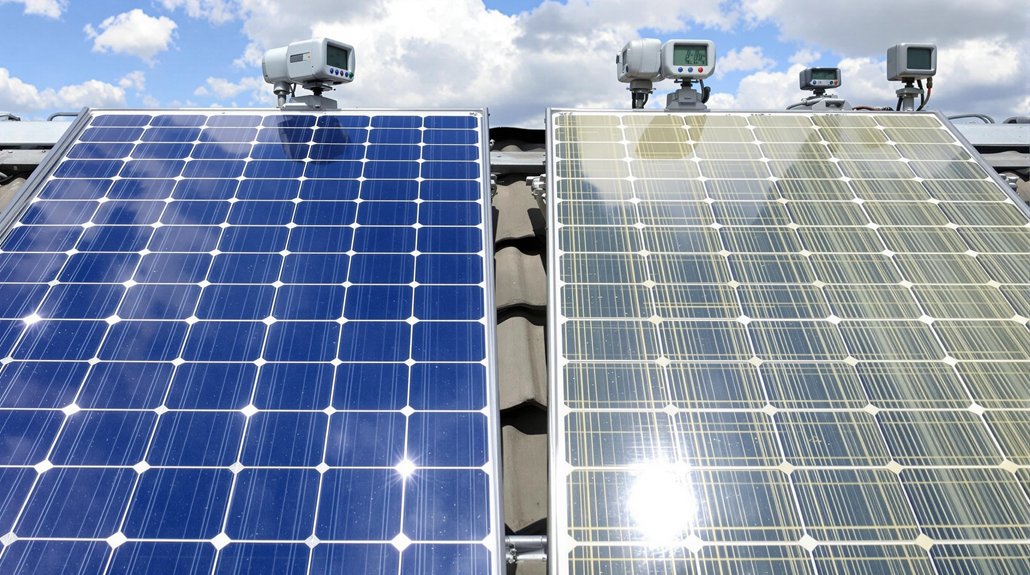Hydroelectric power generates about 15% of global electricity by harnessing flowing water. It’s a renewable energy source with over 90% efficiency in modern turbines. China leads production at 30% worldwide. These systems can operate for 50-100 years with high reliability and low operating costs. While dams can disrupt ecosystems, they also provide flood control, irrigation, and recreation. New designs are reducing environmental impacts while maximizing clean energy benefits.
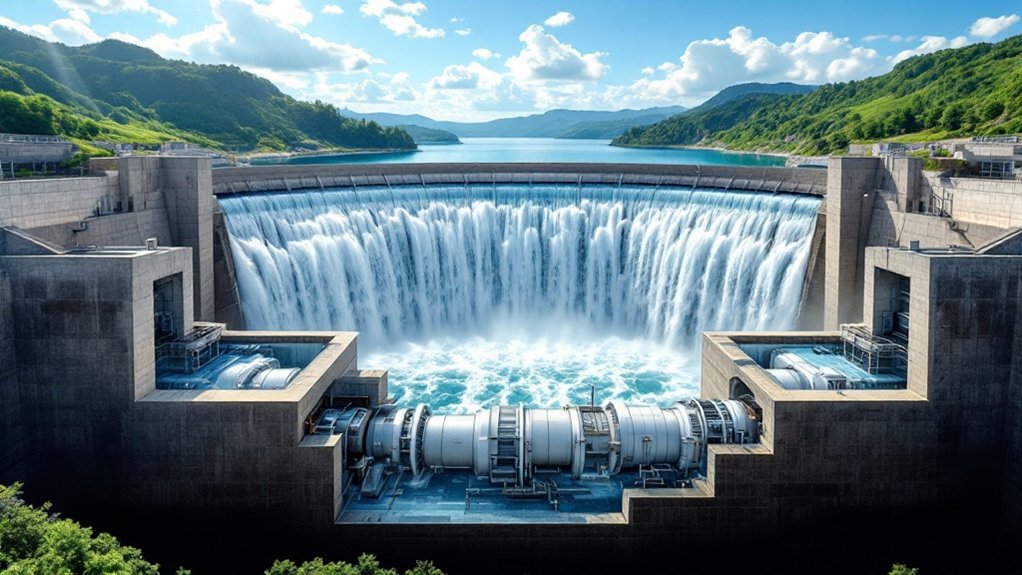
Although electricity generation has many sources, hydroelectric power stands out as one of the world’s largest renewable energy sources. It currently generates about 15% of global electricity, with a total installed capacity of 1,360 gigawatts as of 2021. Hydropower provides more than half of all renewable electricity worldwide, with China leading global production at 30%.
Hydroelectric power works by converting flowing water’s energy into electricity. The technology is highly efficient, with modern turbines achieving over 90% efficiency. These systems can last 50-100 years, making them long-term energy solutions. While initial construction costs are high, operating costs are generally low once the infrastructure is built.
Hydropower systems deliver exceptional efficiency and longevity while providing economical energy for generations.
One of hydropower’s key advantages is its reliability. Unlike wind or solar power, hydroelectric plants can provide baseload power and quickly adjust output to meet changing demand. This flexibility helps integrate other renewable energy sources into the grid. Hydropower plants also offer “blackstart” capabilities, helping restart electrical grids after blackouts.
Environmentally, hydropower produces no direct greenhouse gas emissions during operation. However, large reservoirs can emit methane from decomposing vegetation. Dams also alter river flow, disrupt fish migration, and trap sediments needed for healthy ecosystems. New fish-friendly turbine designs are helping address some of these concerns. Many modern facilities use aerating turbines to maintain adequate oxygen levels for aquatic life downstream of dams.
Beyond electricity, hydropower provides additional benefits including flood control, irrigation, and drinking water supplies. These multi-purpose benefits can boost economic development in rural areas and reduce reliance on imported fossil fuels. Hydropower prevents the burning of 22 billion gallons of oil annually, significantly reducing air pollution and environmental damage. The reservoirs created by dams also provide valuable recreational opportunities that support local tourism and economic growth.
Looking ahead, global hydropower capacity is projected to reach 1,500 gigawatts by 2030. There’s growing interest in pumped storage hydropower, which stores energy by pumping water uphill when electricity demand is low. Climate change may affect future generation by changing water availability in some regions.
Rather than building new dams, many countries now focus on modernizing existing plants to improve efficiency while reducing environmental impacts.
Frequently Asked Questions
How Does Hydroelectric Power Impact Local Ecosystems and Wildlife?
Hydroelectric power disrupts ecosystems by changing river flows and temperatures.
It blocks fish migration routes, with dams killing or injuring fish trying to pass through. Large reservoirs flood forests and displace wildlife. Water quality often suffers as oxygen levels drop.
Despite mitigation efforts like fish ladders and special turbines, freshwater migratory fish populations have plummeted, with a 93% decline in Europe since 1970.
What Are the Social Impacts of Large Hydroelectric Dam Projects?
Large hydroelectric dams often force thousands of people from their homes.
Communities lose farmland, fishing areas, and sacred sites. Many relocated families don’t receive fair compensation and face poverty. Social networks break apart when villages are scattered.
Indigenous groups are hit especially hard, losing cultural traditions tied to river life. While dams create some temporary jobs, the benefits rarely reach those who sacrifice the most.
How Do Hydroelectric Facilities Manage During Severe Droughts?
Hydroelectric facilities adjust operations during severe droughts to maintain power generation. They install adjustable turbines that work efficiently at lower water levels.
Operators modify reservoir management, prioritizing water storage during wet periods. Advanced forecasting systems help predict water availability.
During the worst droughts, hydropower generation can drop by 13-48%, with California experiencing a 48% reduction in 2021. Facilities often complement their output with other energy sources to meet power demands.
Can Small-Scale Hydropower Be Implemented for Individual Homes?
Small-scale hydropower can be installed at individual homes with suitable water sources.
Properties need flowing water with either 2 gallons/minute flow or a 2-foot drop. These systems can generate up to 100 kilowatts and work 24/7.
Installation costs range from $1,000-$20,000 but offer long-term savings. Homeowners must obtain permits, secure water rights, and may need environmental assessments before proceeding with installation.
How Does Hydroelectric Power Compare Economically to Other Renewable Sources?
Hydroelectric power ranks as the most cost-effective renewable energy source. It costs between $0.02-$0.19 per kilowatt-hour, making it cheaper than both solar power ($0.049/kWh) and onshore wind ($0.033/kWh).
Hydropower plants last over 50 years, spreading initial costs over decades. They don’t face fuel price fluctuations and require minimal maintenance.
Regions with high hydropower usage typically enjoy lower energy bills and significant economic benefits.
